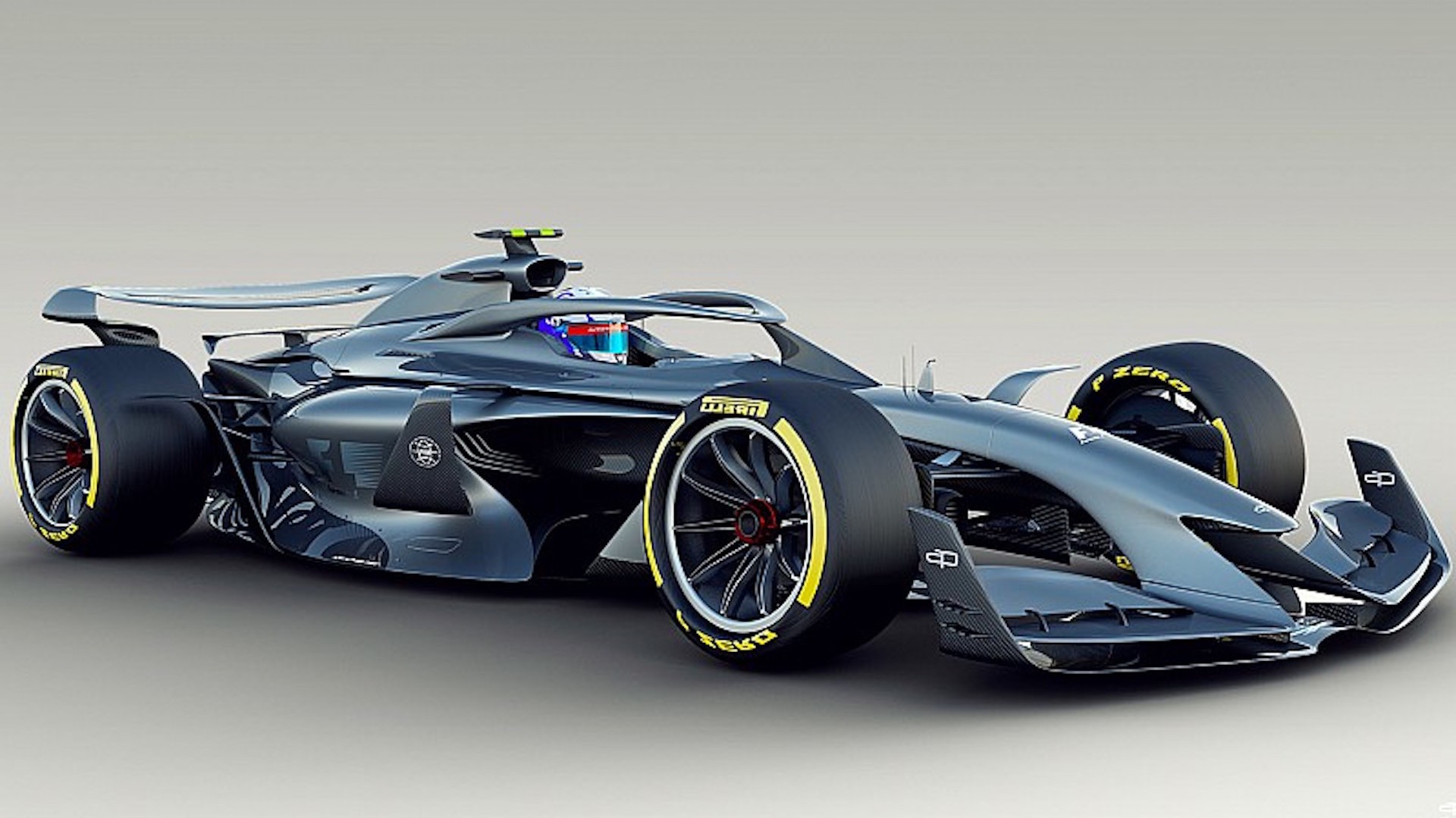

The 2019 Formula 1 season is just enjoying its mid-year summer break, but back at the FIA (and secret team garages most likely not abiding by the rules), loads of engineers and physicists are hard at work mocking up prototypes of the 2021 Formula 1 car. And as this video shows, a scaled-down version of the future racer is already undergoing serious wind tunnel testing.
The footage and technical debrief were uploaded to F1’s official YouTube channel to highlight some of the biggest changes between the current and future F1 cars. Of course, the narrator quickly discloses that this prototype shows “the potential vision F1 and the FIA have for the sport’s future cars.” In other words, it may not look anything like this once 2021 rolls around.

Perhaps the most noticeable change is the wheel size, with the new 2021 car touted to roll on 18-inch wheels and low-profile Pirelli tires. Current cars are equipped with 13-inch wheels and race on slick tires with sizable sidewalls, meaning that regulations will not only increase wheel size by a whopping five inches but also alter grip and cornering forces drastically.
In terms of the overall design, the new regulations that govern the bodywork will aim to reduce the turbulence or “dirty air” currently generated by the leading car in a lead-follow scenario. Much like a boat, an F1 car leaves a wake of dirty air for the car following closely behind, meaning the car doing the chasing loses as much as 50 percent aero grip, which in turn means it has to back away instead of challenging for a pass.
The video shows a robotic rake lowering itself behind the “leading car,” measuring the air disturbance created by the new-gen design, showing alleged improvements of up to 30 percent in reduced turbulence.
With every team looking out for their own interests, it’ll be interesting to see which changes actually come to fruition and which are left on the drawing board. While the FIA has the power to push regulation changes without needing the teams’ approval, it always has to be mindful of the likes of Ferrari, who oftentimes threatens to leave the sport should the rules not favor them. Teams like McLaren and Mercedes-AMG could also threaten to leave if they feel their investments could yield higher returns elsewhere (with lax rules).